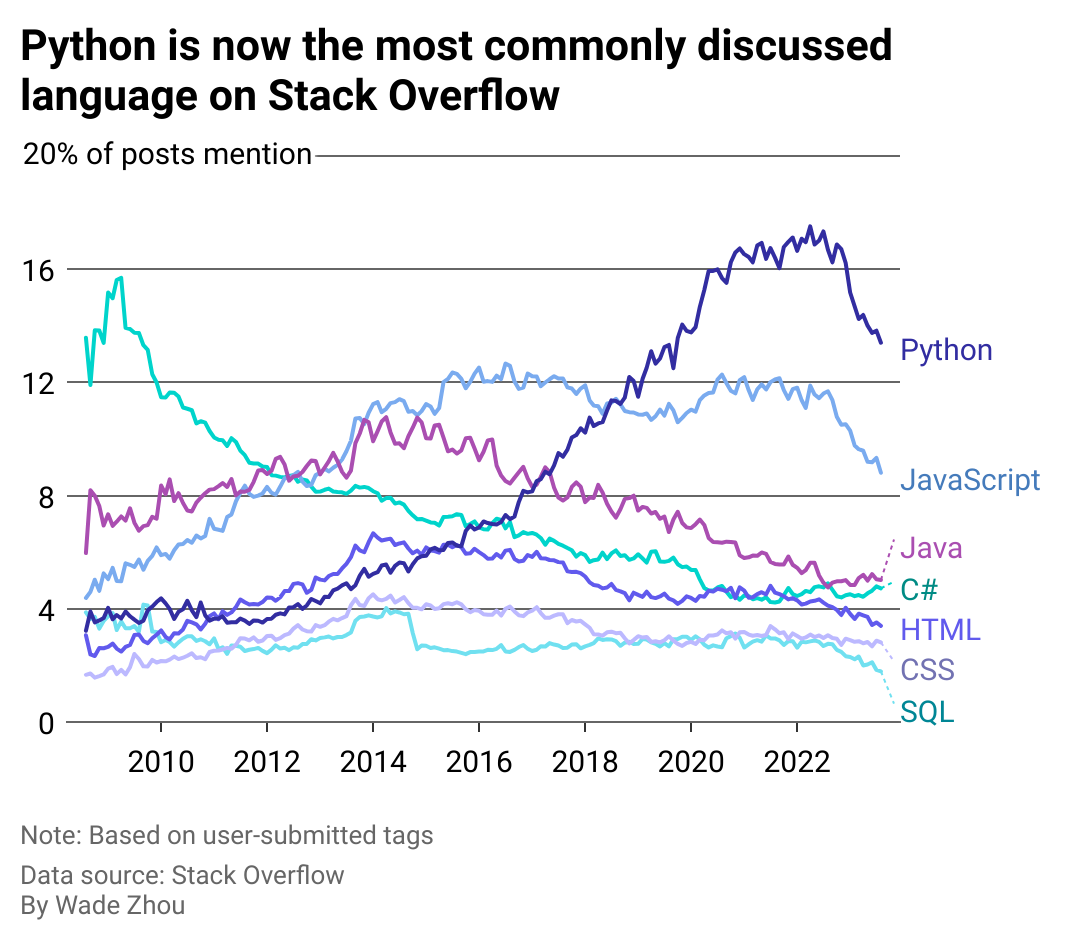
The top 10 programming languages used worldwide, and why employers look for them on resumes
This story originally appeared on Revelo and was produced and distributed in partnership with Stacker Studio.
The top 10 programming languages used worldwide, and why employers look for them on resumes
As the world becomes more reliant on technology, it helps when you know the universal language of engineers: Coding. It's the backbone of software, applications, and data analysis, and it's an increasingly important skill in information workers' mental toolkits.
Technology's prevalence in business and everyday life has contributed to the growth of jobs within the tech industry. Over the last 20 years, the number of people working full-time in the United States in computer and mathematical occupations has doubled, rising from 2.8 million in 2003 to 5.7 million in 2022.
The Bureau of Labor Statistics projects that the number of jobs in computer-related occupations will rise 14% by 2032, though jobs for people who are only computer programmers will decline by 11%. That's because knowledge of programming languages is becoming vital in more job functions, according to The Wall Street Journal. As software and apps become more robust, workers who know programming languages like SQL and Python can more easily run database queries and do complex data analysis. Coding knowledge can also help those in nontech roles communicate and work better with software developers, architects, and programmers.
Revelo analyzed what computer languages are most popular in 2023 using data from Stack Overflow, a website where developers can get help with their programming questions.

Python is now the most commonly discussed language on Stack Overflow
Named after the 1970s British TV show "Monty Python's Flying Circus," Python was released in 1991 as an open-source programming language, meaning anyone can use the language without having to purchase software or pay licensing fees. Developers have used it in web and software development, task automation, machine learning and data science, financial analysis, and artificial intelligence development.
According to GitHub, users like it because it's easy to learn and adaptable to multiple uses. Its simple syntax allows for faster, more efficient coding, even for complex applications. Developers benefit from a large Python user community that has created additional tools, libraries, and reusable code segments that speed up the development process.

But JavaScript is still the most used by developers
JavaScript powers most interactive websites, making it an essential language for anyone working in web development. It's also a popular language used to develop mobile apps and games. Because it's so ubiquitous, it also has a large support community.
Programmers generally learn JavaScript after they've learned HTML and CSS, the other two primary structures for building websites. HTML, or HyperText Markup Language, defines the content of a website, including text and images, and enables links to other websites. CSS, or Cascading Style Sheets, specifies a website's style guide, defining elements like background colors, font style, and text size.
JavaScript makes webpages and sites dynamic and interactive, allowing them to respond to users' selections and provide specific functions or calculations right on a webpage. If you have ever used a website that allowed you to select various options to automatically update a list or a map, it was probably driven by JavaScript. The same is true if you have ever seen a website with a small interactive box, for instance, showing gas prices near where you live or allowing you to get a glimpse at the weather in several locations.
Among all the languages ranked here, some are better for building websites and mobile apps, while others are better for gaming and financial applications. It's important to note that specific programming languages are usually developed to solve a particular problem, which means no one language fits all coding needs—they all offer different possibilities for value and innovation.
Data work by Wade Zhou. Story editing by Jeff Inglis. Copy editing by Tim Bruns.



